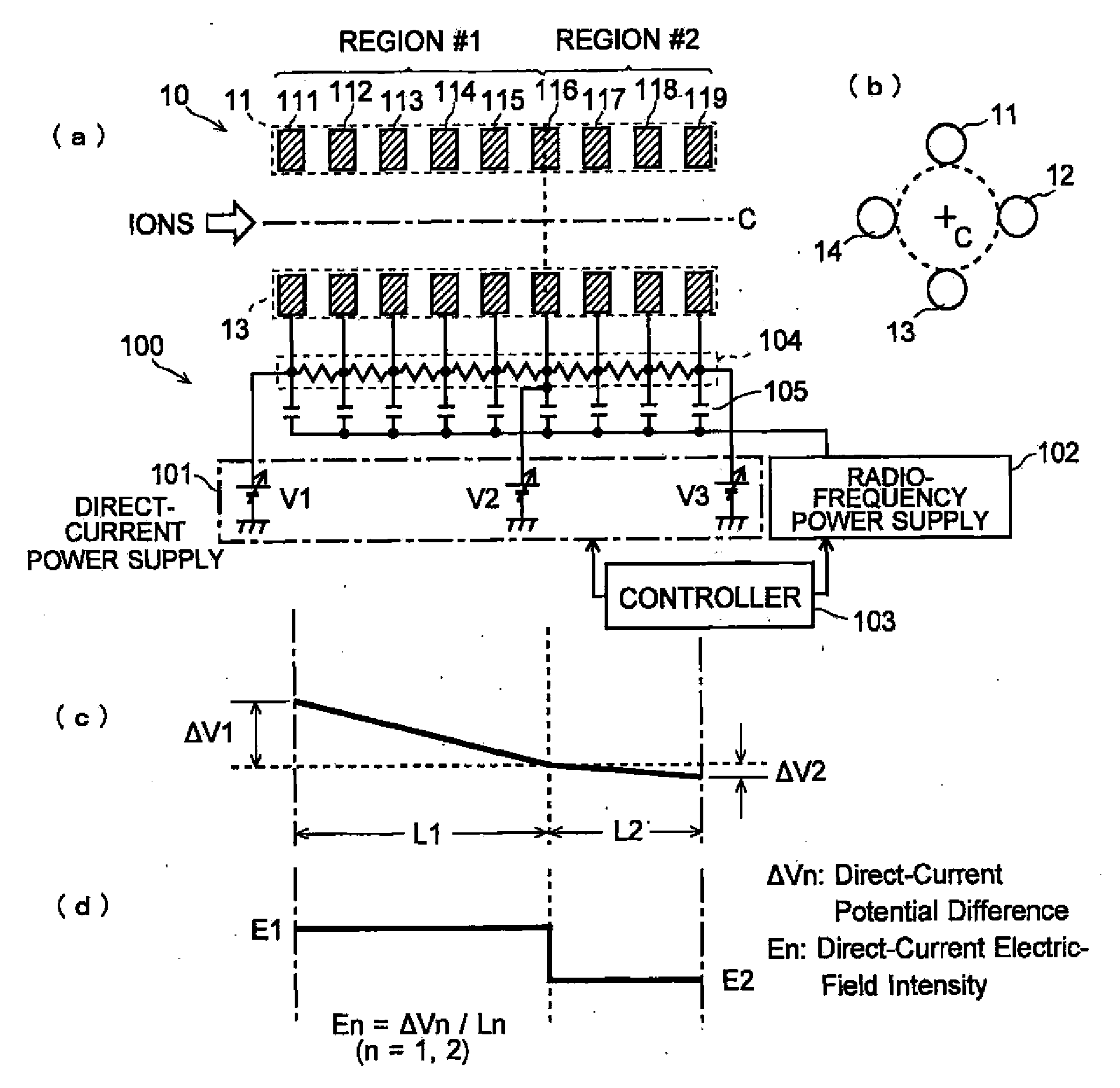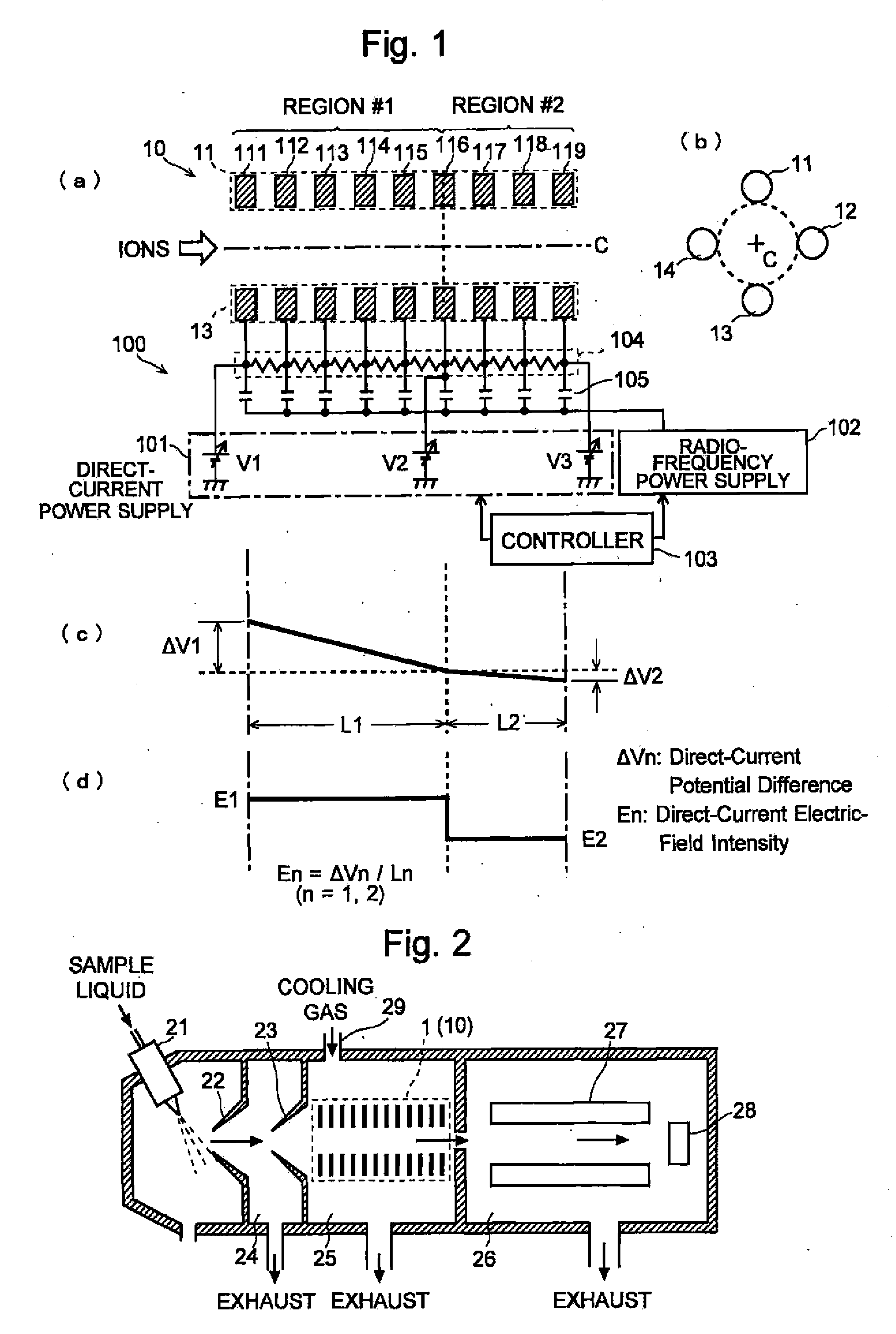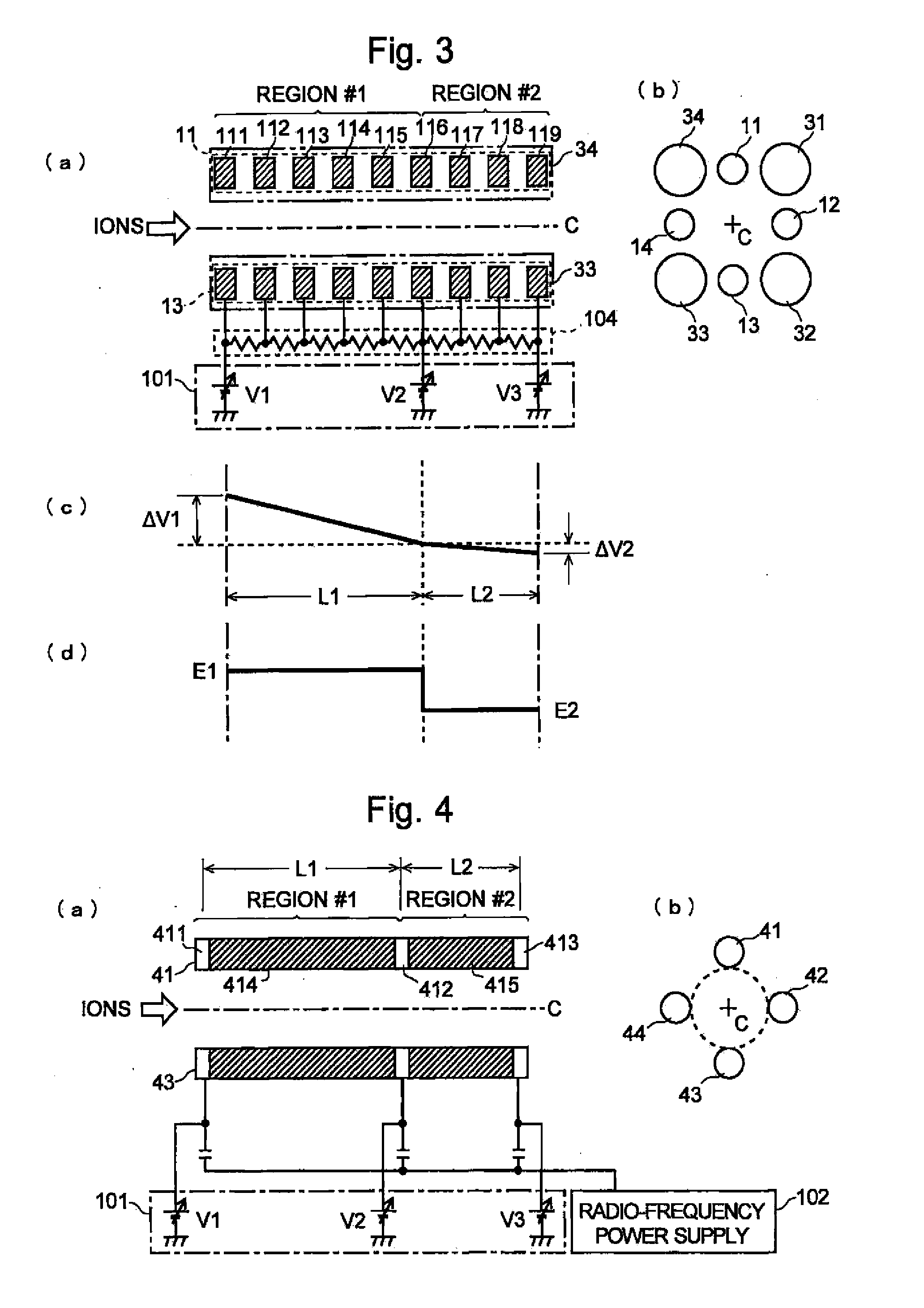Mass Spectrometer
a mass spectrometer and mass spectrometer technology, applied in mass spectrometers, stability-of-path spectrometers, separation processes, etc., can solve the problems of adverse dispersion of ions, ineffective use of direct-current electric fields, and inability to enhance ion transport efficiency, so as to enhance the ion transport efficiency of off-axis ion guides
- Summary
- Abstract
- Description
- Claims
- Application Information
AI Technical Summary
Benefits of technology
Problems solved by technology
Method used
Image
Examples
first embodiment
[0065]An embodiment (the first embodiment) of the mass spectrometer according to the present invention will be described with reference to the accompanying drawings.
[0066]FIG. 2 is a schematic configuration diagram of the mass spectrometer according to the first embodiment, and FIG. 1 is a schematic configuration diagram of the ion guide in the mass spectrometer of the present embodiment and diagrams for explaining the operation thereof. In this mass spectrometer, an ESI ion source is used as an atmospheric pressure ion source.
[0067]As shown in FIG. 2, in this mass spectrometer, a sample liquid is injected to the ESI probe 21, and atomized into a space at substantially atmospheric pressure from the probe 21, so that the sample components are ionized. The generated ions are introduced into the first intermediate vacuum chamber 24 thorough the sampling cone (nozzle), and then introduced into the second intermediate vacuum chamber 25 through the skimmer 23. In the second intermediate v...
modification example
of the First Embodiment
[0082]A modification example of the ion guide 1 which was described in the aforementioned first embodiment is shown in FIGS. 3 through 5.
[0083]In the first embodiment, a radio-frequency voltage which is superimposed on direct-current voltage is applied to virtual rod electrodes 11 through 14. Each voltage forms a radio-frequency electric field and a direct-current electric field in the space surrounded by the virtual rod electrode 11 through 14, respectively. Meanwhile, in the configuration shown in FIG. 3, auxiliary rod electrodes 11 through 14 for forming a direct-current electric field, which are composed of virtual rod electrodes similar to those in the first embodiment, are provided in addition to main rod electrodes 31 through 34 for forming a radio-frequency electric field. The main rod electrodes 31 through 34 are each made of a cylindrical (or column-shaped) conductor and have a typical quadrupole rod type configuration in which four electrodes are pr...
second embodiment
[0088]Next, an ICP-MS which is another embodiment (the second embodiment) of the mass spectrometer according to the present invention will be described. FIG. 6 is a schematic configuration diagram of this ICP-MS, and FIG. 7 is a schematic configuration diagram of the ion guide used in this ICP-MS and diagrams for explaining the operation thereof. The same or corresponding components as in the aforementioned first embodiment are indicated with the same numerals and the detailed explanations are omitted.
[0089]In this ICP mass spectrometer, a sample component is ionized in a plasma flame generated by the plasma torch of ICP ion source 50 under a substantially atmospheric pressure, and generated ions are injected to the ion guide placed in the second intermediate vacuum chamber 25 through the sampling cone 22 and the skimmer 23. In this configuration, an off-axis ion guide 6 is provided in order to prevent the light emitted from the plasma flame from entering the second intermediate vac...
PUM
 Login to View More
Login to View More Abstract
Description
Claims
Application Information
 Login to View More
Login to View More - R&D
- Intellectual Property
- Life Sciences
- Materials
- Tech Scout
- Unparalleled Data Quality
- Higher Quality Content
- 60% Fewer Hallucinations
Browse by: Latest US Patents, China's latest patents, Technical Efficacy Thesaurus, Application Domain, Technology Topic, Popular Technical Reports.
© 2025 PatSnap. All rights reserved.Legal|Privacy policy|Modern Slavery Act Transparency Statement|Sitemap|About US| Contact US: help@patsnap.com



